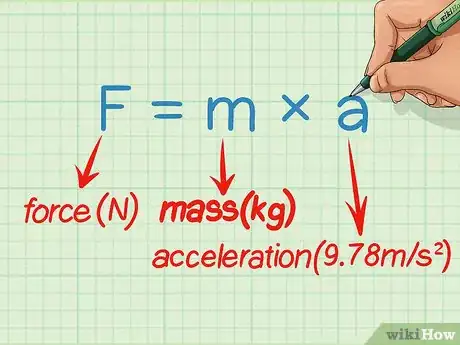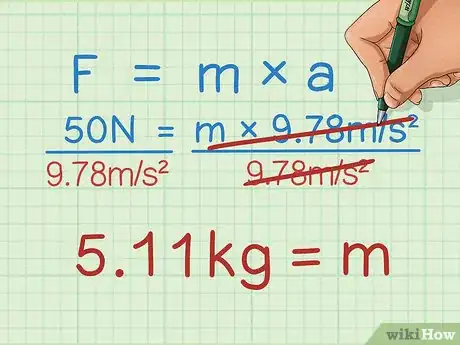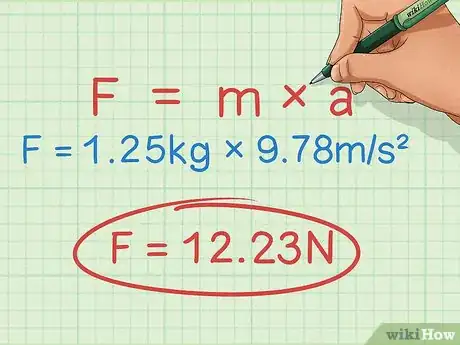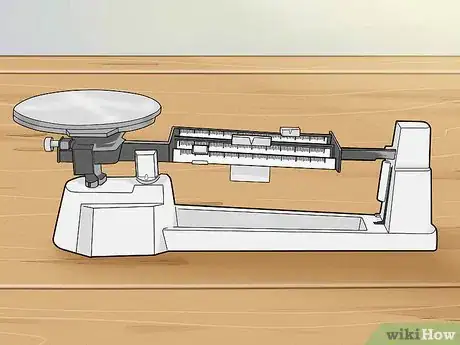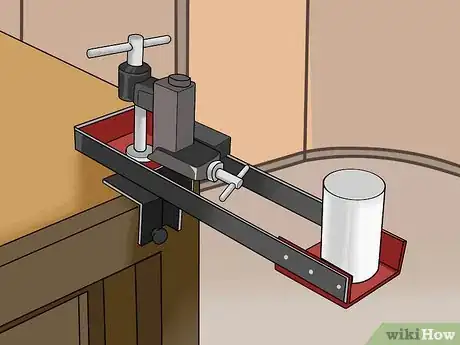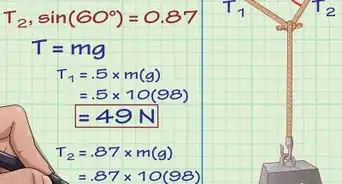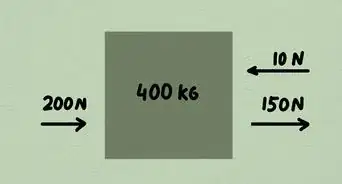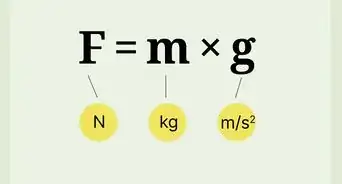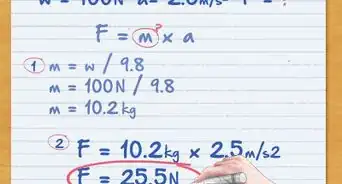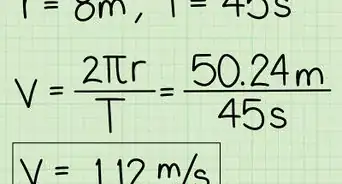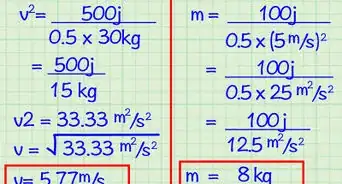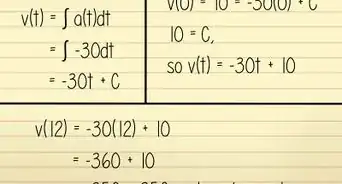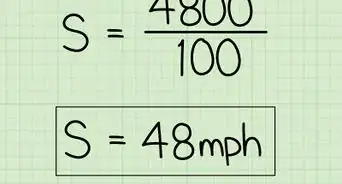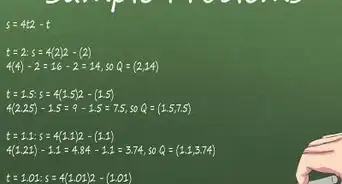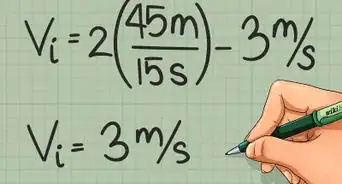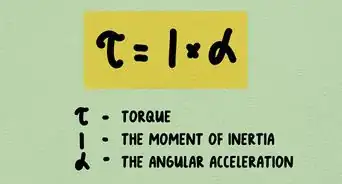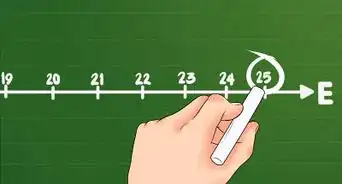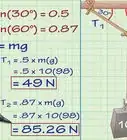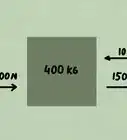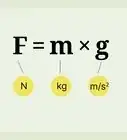wikiHow is a “wiki,” similar to Wikipedia, which means that many of our articles are co-written by multiple authors. To create this article, 20 people, some anonymous, worked to edit and improve it over time.
There are 10 references cited in this article, which can be found at the bottom of the page.
This article has been viewed 296,164 times.
Learn more...
What's the difference between mass and weight?[1] Weight is the effect that gravity has on an object. Mass is the amount of matter in an object irrespective of the effect that gravity has on it. If you were to move a flagpole over to the Moon, its weight would be reduced roughly by 5/6, but its mass would stay the same.[2]
Steps
Converting Weight and Mass
-
1Know that F (force) = m (mass) * a (acceleration).[3] This simple equation is what you'll use to convert weight into mass (or mass into weight, if you want to). Don't be worried about what the letters mean — we'll tell you:
- Force is the same thing as weight. Use Newtons (N) as weight.
- Mass is what you're solving for, so it may not be defined to begin with. After solving the equation, your mass will be calculated as kilograms (kg).
- Acceleration is the same thing as gravity. Gravity is on earth is a constant equaling 9.78 m/s2. If you're measuring gravity on other planets, this constant will be different.
-
2Convert weight into mass by following this example.[4] Let's illustrate how to convert weight into mass by using an example. Say you're on earth and you're trying to figure out how much mass your 50 kg soapbox racer has.
- List your equation. F = m * a.
- Fill in your variables and constants. We know that force is the same thing as weight, which is 50 N. We also know that the effect of gravity on earth is always 9.78 m/s2. Plug in both numbers and our equation looks like this: 50 N = m * 9.78 m/s2
- Rearrange in order to solve. We can't solve the equation like this. We need to divide 50 kg by 9.78 m/s2 in order to isolate m.
- 50 N / 9.78 m/s2 = 5.11 kg. A soapbox racer that weighs 50 Newtons on Earth has a mass of about 5 kg, wherever you race it in the universe!
Advertisement -
3Convert mass into weight. Learn how to convert mass back into weight using this example. Let's say that you pick up a moon rock on the surface of the Moon (where else?). It has a mass of 1.25 kg. You want to know how much it will weigh when you bring it back to earth.[5]
- List your equation. F = m * a.
- Fill in your variables and constants. We have mass and we have the gravitational constant. We know that F = 1.25 kg * 9.78 m/s2.
- Solve the equation. Because the variable we're looking for is already isolated on one side of the equation, we don't have to do any moving around in order to solve the equation. We simply multiply 1.25 kg by 9.78 m/s2, giving us 12.23 Newtons.
Measuring Mass Without Equations
-
1Measure gravitational mass. You can measure mass using a balance.[6] A balance is different from a scale because it uses a known mass to measure the unknown mass where as a scale actually measures weight.
- Finding mass with a triple-beam balance or a double-pan balance is a form of measuring gravitational mass. This is a static measurement, which means it is only accurate when the object being measured is at rest.
- A balance can measure weight and mass. Because the measurement of the balance weights change by the same factor as the object being measured, a balance is able to accurately provide the mass of an object regardless of the specific gravity of the environment.
-
2Measure inertial mass.[7] Inertial mass is a dynamic measuring method, meaning that it can only be accomplished while the object being measured is in motion.[8] The inertia of the object is used to quantify the amount of matter.
- An inertial balance is used to measure inertial mass.
- Secure the inertial balance to a table.
- Calibrate the inertial balance by putting the container in motion counting the number of vibrations in a specified time period, for example 30 seconds.
- Place an item of known mass in the container and repeat the experiment.
- Continue using several items of known mass to finish calibrating the scale.
- Repeat the experiment with an item of unknown mass.
- Graph all results to find the mass of the final object.
Community Q&A
-
QuestionCan you explain what mass of a body means?
 Community AnswerIt means how many particles are in that object. It is the weight in Newtons of the object divided by the acceleration due to gravity.
Community AnswerIt means how many particles are in that object. It is the weight in Newtons of the object divided by the acceleration due to gravity. -
QuestionHow do I use the beam balance to measure the mass of a body?
 Community AnswerHave your subject stand on the scale, then slowly move the slider on the beam until it is level and balanced.
Community AnswerHave your subject stand on the scale, then slowly move the slider on the beam until it is level and balanced. -
QuestionHow do I calculate mass using density?
 Community AnswerDensity equals mass divided by volume. Therefore, mass would equal density multiplied by volume. You will need the volume along with the density to calculate the mass.
Community AnswerDensity equals mass divided by volume. Therefore, mass would equal density multiplied by volume. You will need the volume along with the density to calculate the mass.
References
- ↑ https://sciencenotes.org/mass-vs-weight-the-difference-between-mass-and-weight/
- ↑ http://education.jlab.org/qa/mass_01.html
- ↑ https://www.nasa.gov/audience/foreducators/topnav/materials/listbytype/Force_Equals_Mass_Times.html
- ↑ http://www.grc.nasa.gov/WWW/k-12/aerosim/LessonHS97/Massconv.html
- ↑ https://sciencing.com/mass-weight-7721316.html
- ↑ https://education.jlab.org/qa/mass_01.html
- ↑ https://sciencing.com/calculate-inertial-force-mass-8779535.html
- ↑ https://www.bbc.com/bitesize/guides/z37jng8/revision/3
- http://www4.hcmut.edu.vn/~huynhqlinh/olympicvl/tailieu/physlink_askexpert/ae305.cfm.htm
About This Article
One way you can measure mass is by using the equation F = m × a, where F is force, m is mass, and a is acceleration. Just plug in the information you know for force, which is the same as weight, and acceleration, which is the same as gravity, and solve for mass. Alternatively, you can measure mass by putting your object on a triple-beam or double-pan balance, which is accurate for objects at rest. However, to get the mass of objects in motion, you’ll need to use an inertial balance, instead. To learn how to convert weight into mass or mass into weight by looking at examples, scroll down!
